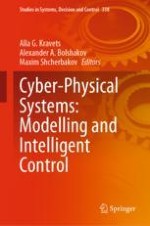This book highlights original approaches of modelling and intelligent control of cyber-physical systems covering both theoretical and practical aspects. The novel contribution of the book covers the transformation of scientific research and their results into applications for cyber-physical systems design and operation during the whole life cycle in different domains.
Given its scope, the book offers an excellent reference book for researchers and other readers in the fields of cyber-physical systems modelling and intelligent control, space exploration and practical implementation of cyber-physical systems. The book also benefits researchers and practitioners in artificial intelligence and machine learning, as described results can be applied in cyber-physical systems design and cost-effectively maintenance. The target audience of this book also includes practitioners and experts, as well as state authorities and representatives of international organizations interested in creating mechanisms for implementing Cyber-Physical Systems projects.
